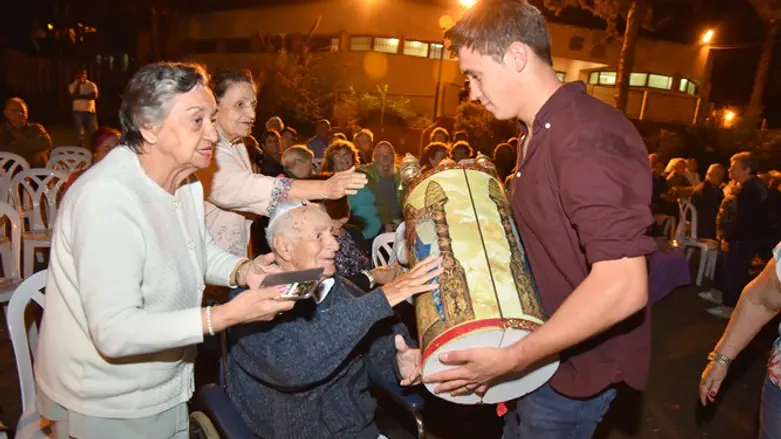
About 80 Holocaust survivors celebrated Hakafot Shniyot (Second round of Hakafot) Monday night at the Hodayot religious youth village in the lower Galilee. Hodayot students are primarily from needy new immigrant families and all go on to serve in the IDF.
Hakafot Shniyot take place after the holiday has ended and observant Jews dance with Torah scrolls the same way they did during the holiday of Simchat Torah, but can have musical accompaniment and travel to the location of the dancing rather than be limited to their home environs.
The Foundation for the Benefit of Holocaust victims in Israel and the Association of Romanian Jews in Haifa participated in the event, which was held for the fourth year in Hodayot. it is a tradition for Hodayot graduates, many in uniform, to come to the youth village for Hakafot Shniyot.
Lower Galilee Council head Moti Dotan also participated in the outdoor dancing.
"The event represents a real connection between generations in Israeli society." said Yaniv, a resident of the area who came to take part in the dancing. Holocaust survivors are no longer young, and so we must seize every opportunity to be near them and hear their stories."
Youth village graduate Eden Tibgo said that "to dance with Holocaust survivors on the one side, and (Israeli) soldiers on the other side, gives me the feeling that I am participating in history. It's amazing to see what our people have become in less than 100 years."
Eli Stein, the village's CEO and educational headmaster, said that "Thanks to our successful cooperation with the Foundation for the Benefit of Holocaust victims in Israel, various IDF units, and many other organizations, this year's event was both exciting and powerful. Connecting the memories of the Holocaust survivors of Simchat Torah in the Warsaw Ghetto to this Simchat Torah with IDF soldiers who are celebrating the holiday for the first time in Israel, the survivors have shown that each Hakafa was another victory over the Nazi oppressors. This encounter made our students feel much more concretely that they were a part of history."